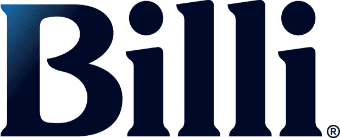Newest
Popular
Products
Can’t find what you are looking for, please call 1800 812 321 or email us on info@billi.com.au
Billi Media
Revolutionising Workplace Wellness Design
Organisations are grappling with the reality that a substantial percentage of their employees may never return to the office on a full-time basis. Today’s employees’ attitudes are changing, placing greater emphasis on flexibility and relying more on employers to drive a culture of health and wellbeing.
Wellness initiatives are no longer a workplace perk; they are a necessity, offering a way for employers to encourage healthy lifestyle choices and invest in their
employees’ happiness. Considering how important water is to the functioning of the human body, one of the key strategies to improve workplace wellness is hydration.
Dehydration happens when our bodies lose more water than we take in. Although it occurs more frequently during physical activity or illness, employees in the workplace can also experience this simply by forgetting to drink enough fluids.
Promoting sustainability through hydration
In Australia, bottled water is a major contributor to landfills. Only 36% of PET plastic water bottles are recycled, which means that 373 million plastic water bottles end up as waste every year.7 Instant filtered hydration systems provide easy and convenient access to drinking water, enabling employees to reduce their consumption of bottled water products.
In addition to reducing plastic waste, hydration systems contribute to sustainable building ratings such as Green Star, the Well Building Standard and LEED. For example, the WELL Building Standard focuses on eight areas—fitness, comfort, air, water, mind, nourishment, light, and innovation—that are essential to a healthier work environment. Within this framework, the Standard promotes safe and clean water through the implementation of proper filtration techniques and regular testing in order for building occupants to receive optimal quality of water.8
When specifying hydration systems, it is important to consider the environmental, social and economic impact of your chosen products and materials over the whole product life cycle. Some systems incorporate technology to improve their energy efficiency, which may include stand-by power modes, heat-exchange technology and insulation to reduce heat loss.
Billi, your partner in workplace wellness
Proudly Australian made and designed, Billi has been at the forefront of the instant filtered boiling, chilled and sparkling water systems industry for over 30 years. The company’s in-house research and development team works side by side with our highly skilled manufacturing engineers to deliver superior instant filtered water systems locally and around the world.
Today, Billi continues to innovate and keep pace with modern techniques, contemporary interior concepts, and ever-changing lifestyle changes. And importantly, Billi products continue to incorporate improved eco-technology features.
One standout for modern workplaces is the Quadra range of filtered water dispensers. Quadra is Global GreenTag certified, which means the products pass the world’s toughest standards for health, eco performance and safety and contribute credits to a wide range of sustainable building rating tools.
Billi Quadra uses Natural Gas refrigerant (R290), which has no ozone depletion potential (ODP) and a negligible direct global warming potential (GWP). R290 has a GWP of below five, according to the Department of Climate Change, Energy, the Environment and Water. In addition, R290 exhibits exceptional thermodynamic characteristics, enhancing heat transfer efficiency and expediting cooling processes. With outstanding heat transfer capabilities, R290-powered systems demand less energy for temperature control, thus diminishing energy usage and reducing utility expenses.
The product comes with a two-year warranty, and it is Watermark certified.
Billi also offers refillable service plan options to ensure continuous drinking water onsite. With periodic plans and plans available for sites with multiple units, Billi offers a bespoke management system for any customer need.
Check out Architecture & Design whitepaper for the latest industry insights.
CATEGORIES
ARCHIVES
- July 2025
- May 2025
- April 2025
- March 2025
- February 2025
- January 2025
- December 2024
- November 2024
- October 2024
- September 2024
- August 2024
- July 2024
- June 2024
- May 2024
- April 2024
- March 2024
- February 2024
- November 2023
- September 2023
- June 2023
- April 2023
- March 2023
- January 2023
- December 2022
- November 2022
- October 2022
- July 2022
- June 2022
- April 2022
- March 2022
- January 2022
- December 2021
- November 2021
- October 2021
- September 2021
- August 2021
- July 2021
- June 2021
- November 2020
- June 2020
- February 2020
- January 2020
- November 2019
- October 2019
- September 2019
- July 2019
- April 2019
- March 2019
- February 2019
- November 2018
- May 2018
- February 2018
- October 2017
- May 2017
- January 2017
- October 2016
- September 2016
- April 2015
- March 2015
- November 2014
- October 2014




